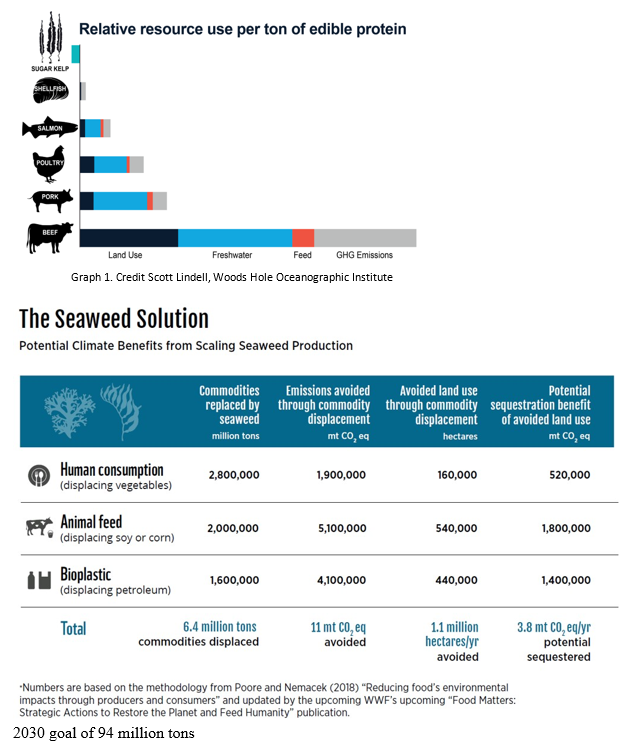SCALING SEAWEED AND SHELLFISH FARMING – IMPLICATIONS FOR RESOURCE USE
Seaweed and shellfish farming are distinct but complimentary tools used to mitigate climate change and disrupt resource-intensive feedstock production when brought to a meaningful scale . Both require no arable land, freshwater, or fertilizer and produce protein with the lowest resource use per ton of any food source while simultaneously playing a role in remediation of the surrounding water column. Both also face similar barriers to expansion.
Seaweed can be used as an alternative to animal feed and pack aging material , displacing traditional crops and petroleum-based products. Accelerating growth of the seaweed industry could displace the use of commodities by 6.4 million tons and avoid over 1 million hectares per year of land use by 2030 . Shellfish provide more protein than seaweed with significantly lower resource input than other animal sources and shell growth acts as a carbon sink. However, current domestic supply cannot meet demand and the US continues to import shellfish over long distances. This offsets the carbon footprint and resource use benefits of such a low-impact protein source.
This presentation will discuss the realistic potential for scaling seaweed and shellfish farming in order to provide alternatives that offset intensive resource use both during production and as an end-use product.
